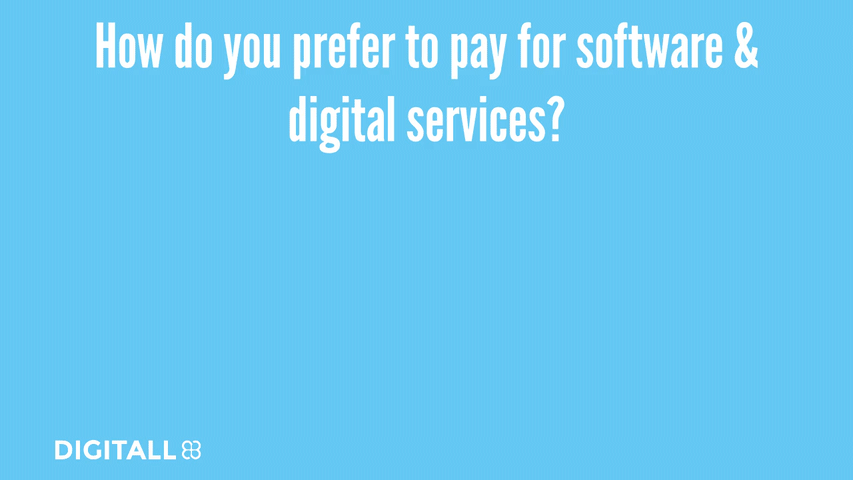2 min read
Why Customer Experience Is Becoming the Ultimate Competitive Edge
Products can be replaced, prices can be compared, but experiences last. In the chapter “Customer...
By Juliane Waack on 27.10.2021

5 min read
From Netflix to the business cloud - more and more companies are offering subscriptions. Renting resources and services instead of buying them is becoming increasingly a part of our daily lives.
Many companies might think that subscriptions are only for streaming services and lifestyle items but is a high value in offering customers flexible services and products accompanied by high-class services.
Tl; dr: Subscription models can be used for many different products and service offerings and act as a great way to create a loyal customer base that is more engaged and active than any one-time-buyer.
Content:
1. What is a subscription model?
2. Advantages and disadvantages of subscriptions
3. The most important questions to define your subscription model
The subscription model usually means that users do not buy a product but rent or have access to it for a certain period of time.
How long this period lasts and what the cancellation period looks like often depends heavily on the product itself. While you can cancel your Netflix subscription at any time, for example, business applications usually have annual cancellation periods. Other models let customers choose between annual payments that are cheaper but can't be cancelled before the year is up and monthly payments which usually mean paying more but can be cancelled anytime.

(Results of a LinkedIn survey on the DIGITALL account)
In addition, many companies, especially for products that are aimed at B2B customers have Basic, Pro and Enterprise offerings that address different levels of usage and vary in prices.
Whereas ten years ago the subscription model was mainly for book clubs and newspaper subscriptions, it is now part of our everyday life. Furthermore, subscriptions are also catching on in everyday business life. Between 2011 and 2016, the subscription market grew 100% annually from $57 million in 2011 to $2.6 billion in sales in 2016 (source: stanford.edu).
In an interview with Stanford Business, expert Tien Tzuo explains that it is rarely about the physical product, but about what the customer wants to achieve with it. It is precisely this customer-centric approach that forms the basis for identifying what is suitable as a subscription model and what is not. Incidentally, this can also be combined with classic product sales.
One example would be the Peloton Bike, an exercise bike that is much more expensive than other exercise bikes but offers additional service subscriptions that enable professional training at home. Peloton's revenue is therefore a combination of the bike sales (and additional equipment) as well as the monthly subscriptions to the many trainings that Peloton offers its customers. Even though the subscription fee is relatively low (to compete with physical gyms), they do provide long-term customer loyalty.
Subscription models can therefore be used to strengthen customer loyalty and identification with the purchased product.
In the interview, Tzuo explains that companies initially experience a slump in sales when they switch to subscription models. This is certainly due to the fact that there is a switch from high-priced one-time payments to low-priced tiered payments, which impacts short-term sales. The costs for the company also go up at first, as investments have to be made for the new business model. After the successful transformation, however, the cost of doing business decreases and revenue increases again.
With loyal subscription customers, the quality of customer data also increases, because if a customer uses your services regularly, you can learn much more about them than if they only occasionally buy a product. With more customer insights, customer journeys, marketing and service can become much more individualized. In turn, they can create stronger bonds with customers through personal, positive experiences.
In his talk, "The Subscription Economy," Tzuo explains how the subscription model means that companies need to think about their offerings in a customer-centric way. If they do, they can unite marketing, sales and service into a seamless customer journey or ecosystem. Subscriptions can be the foundation of communities, where subscribers not only receive a product or service, but benefit from their participation in the community, networking with each other and discovering common ground as a result.
Especially during the pandemic, many interactions and services have shifted to digital. Research by the payment provider Paysafe showed that every second (surveyed) customer has two or more subscriptions. Every fourth plans on increasing the number, with younger demographics being more prone to subscribe.
Advantages
Disadvantages
Subscribe to the blog for regular updates on digital trends, leadership tips and market research.
Juliane Waack is Editor in Chief at DIGITALL and writes about the digital transformation, megatrends and why a healthy culture is essential for a successful business.
by Sabine Kirchem
Products can be replaced, prices can be compared, but experiences last. In the chapter “Customer...
by Sabine Kirchem
Customer Relationship Management (CRM) is no longer just a technical discipline but revolves around...
by Sabine Kirchem
There's loads of data out there – but are we truly utilizing it? And more importantly, are we using...